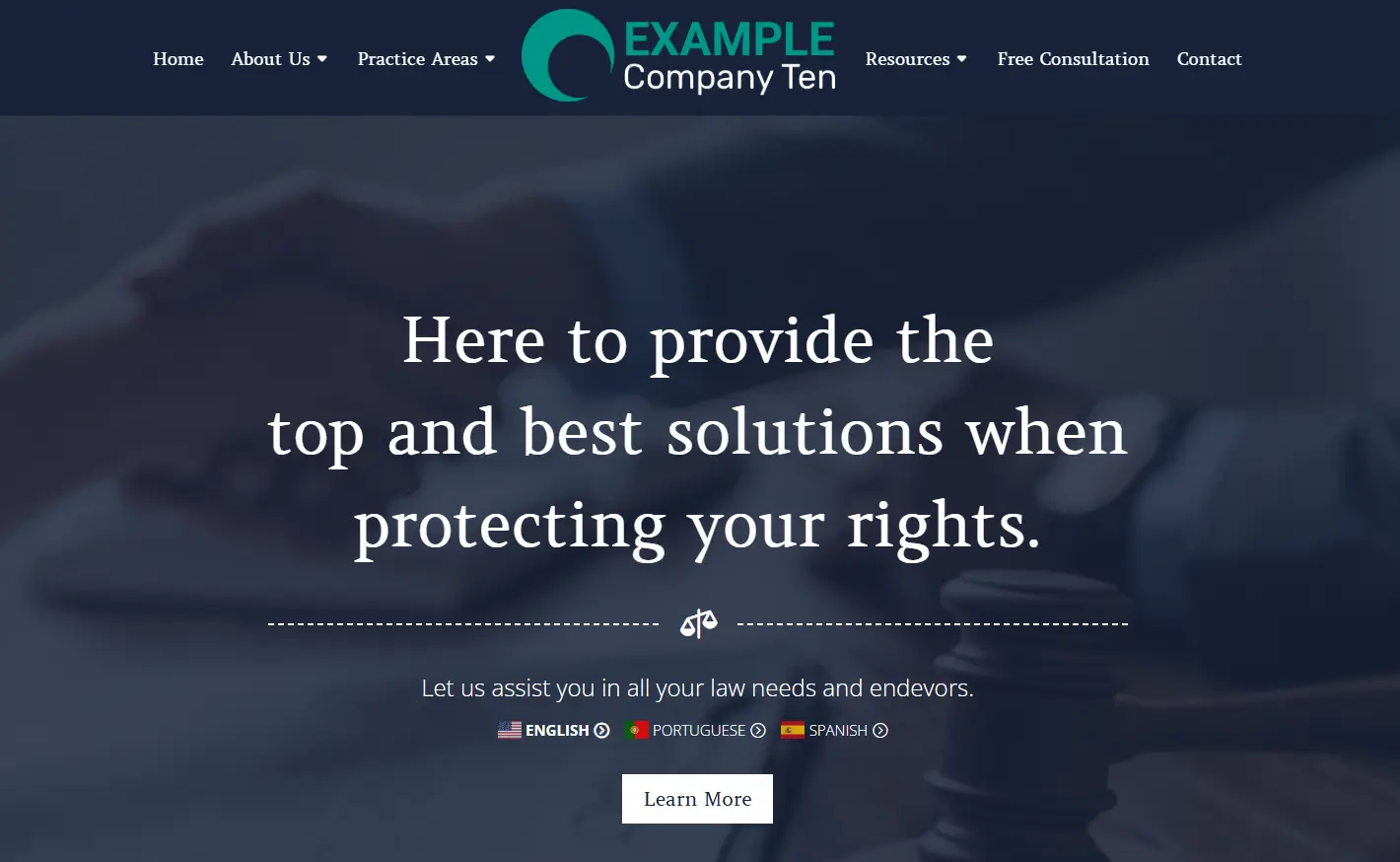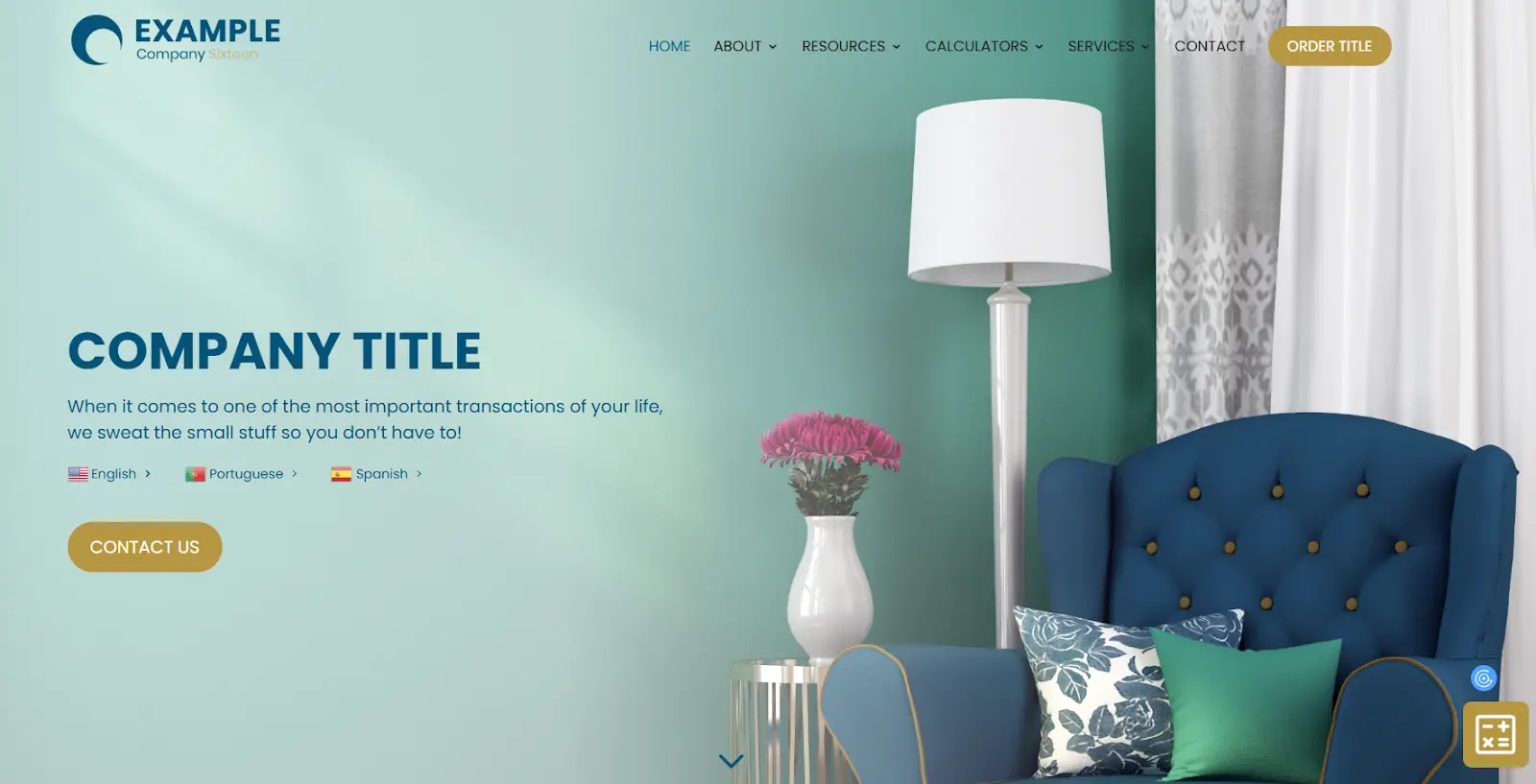When your website isn’t accessible, it’s not just a missed opportunity; it can be seen as neglecting your responsibility. Let’s examine why an ADA-compliant website matters, and what you can do to achieve it.
What Is the ADA?
The Americans with Disabilities Act, or ADA, is a federal law that prevents discrimination against people with disabilities across many areas of everyday life, including employment, education, transportation, and more. At its core, the ADA is about fairness; guaranteeing equal rights and opportunities, whether someone is visiting your office or browsing your website.
Although the ADA doesn’t explicitly mention websites, both courts and the Department of Justice (DOJ) enforce compliance under Title III. Additionally, to align with these expectations, many businesses follow the Web Content Accessibility Guidelines (WCAG) 2.1 Level AA — widely considered the gold standard for ADA-compliant websites.
Why Is ADA Compliance Essential for Your Law Firm’s Website?
Your website is often a client’s first impression of your firm. If your website isn’t ADA-compliant, you not only risk looking unprofessional, but you may also exclude people who need your legal assistance the most. Here’s why building an ADA-compliant website design is essential:
Serve Differently Abled Clients
Clients with disabilities rely on accessible websites to access legal services. For example, individuals with visual impairments benefit from screen readers that convert text to speech — but only when images include descriptive alt text and buttons are properly labeled.
Those with motor disabilities often rely on keyboards or voice commands to use your site. That’s why buttons and links need to work without a mouse, and keyboard navigation should flow step-by-step (like pressing the Tab key).
A non-compliant site may be viewed as excluding these individuals, directly contradicting every law firm’s mission to uphold justice for all.
Protect Your Reputation
An accessible website demonstrates your firm’s integrity, as well as its commitment to ethical practices. Conversely, an inaccessible site may harm your reputation, signaling a lack of consideration for the needs of disabled clients.
Avoid Costly Lawsuits
Businesses across various industries have been sued over websites that exclude users with disabilities. For example, Domino’s Pizza faced a landmark case in 2019 after a blind customer couldn’t place an order online. This shows that law firms are not exempt from legal challenges. Failing to design an ADA-compliant website can lead to costly lawsuits and serious financial setbacks.
How Do You Make Your Law Firm Website ADA-Compliant?
Designing an accessible website doesn’t need to be complicated. Here’s how to make a website ADA-compliant, with some examples to guide you.
Improve Color Contrast
People with low vision or color blindness may struggle to read your content if your website doesn’t have a clear color contrast. When text blends into the background — like light gray on white — it becomes difficult or even impossible for many visitors to read, making your content inaccessible.
For accessible design, aim for a 4.5:1 contrast ratio between text and its background. Tools like WebAIM’s Contrast Checker can help by analyzing color combinations in real time.
For example, TitleTap’s sample website design below uses white text against a navy background — a combination that exceeds accessibility requirements while maintaining a clean, professional aesthetic.
Enable Keyboard Navigation
Many users with motor disabilities rely on keyboards and other assistive devices to navigate websites. To accommodate their needs, ensure that every interactive element — from menus to buttons to forms — is accessible using only the Tab and Enter keys. Test your site by navigating without a mouse, and confirm that focus indicators (e.g., highlighted buttons) clearly show where a user is on the page.
At TitleTap, we design our websites with keyboard accessibility in mind. Dropdown menus open with a single keystroke, and forms are designed to be filled out entirely without a mouse. To make navigation even easier, we’ve partnered with UserWay to integrate an accessibility widget, making it easier for users to navigate the website with nothing but their keyboard.
Add Alt Text to Images
Alt text tells people using screen readers what’s in your image.
Instead of vague names like “image0904.jpg,” go for something more descriptive, like “Family law attorney and client discussing legal documents.” Think of alt text as giving a voice to your visuals — it tells users what’s on the page while also boosting your site’s SEO.
Regularly Audit Accessibility
Every update — whether you add a blog post or tweak a page — can unintentionally introduce accessibility barriers. Tools like WAVE or Axe can catch common issues like missing image descriptions, poor color contrast, or broken links. However, complex problems like poor keyboard navigation still need a human to step in and fix. That is why many law firms schedule quarterly audits to proactively address concerns.
Is Your Website Helping or Hurting Your Business?
Discover what makes a legal website truly effective. Join TitleTap’s free webinar for actionable tips on design, SEO, user experience, and more.
Avoid Flashing Elements and Media that Autoplay
Autoplaying videos or flashing animations can disorient users with cognitive disabilities or photosensitive epilepsy. Ensure all media includes pause/play controls, and eliminate strobe-like effects.
TitleTap’s website designs prioritize static imagery and user-triggered video playback, reducing sensory overload while keeping the focus on your firm’s message.
Build an ADA-Compliant Website with TitleTap’s Expertise
ADA website compliance may seem complex, but it doesn’t have to be. Working with a partner that understands both web design and legal industry standards can make all the difference.
TitleTap designs professional websites specifically for law firms and title companies, with ADA compliance, user-friendly navigation, and polished branding as core priorities. We go beyond the basics — features like alt text, keyboard-friendly menus, and proper color contrast are built in from day one, while regular accessibility audits ensure ongoing compliance. From layout to functionality, we integrate accessibility into every layer of your site, helping you serve clients confidently while reducing legal risks.
If you’re ready to make your website ADA-compliant, avoid unnecessary risks, and serve all your clients more effectively, it’s time to work with a team that gets it right.
Get started today with TitleTap — and build a law firm website that’s accessible, professional, and compliant.
Websites Built for Legal
Learn how TitleTap combines industry insight with turnkey design to help law firms stand out online.


